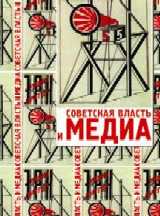Margaret A. Rose: Marx’s Lost Aesthetic: Karl Marx and the Visual Arts (1984)
Filed under book | Tags: · 1840s, 1860s, 1920s, aesthetics, art, art history, art theory, avant-garde, constructivism, marxism, painting, socialist realism

“This book offers an original and challenging study of Marx’s contact with the visual arts, aesthetic theories, and art policies in nineteenth-century Europe. It differs from previous discussions of Marxist aesthetic theory in looking at Marx’s views from an art-historical rather than from a literary perspective, and in placing those views in the context of the art practices, theories, and policies of Marx’s own time. Dr Rose begins her work by discussing Marx’s planned treatise on Romantic art of 1842 against the background of the philosophical debates, cultural policies, and art practices of the 1840s, and looks in particular at the patronage given to the group of German artists known as the ‘Nazarenes’ in those years, who are discussed in relation to both the English Pre-Raphaelites, popular in the London known to Marx, and to the Russian Social Realists of the 1860s. The author goes on to consider claims of twentieth-century Marxist art theories and practices to have represented Marx’s own views on art. The book the conflicting claims made on Marx’s views by the Soviet avant-garde Constructivists of the 1920s and of the Socialist Realists who followed them are considered, and are related back to the aesthetic theories and practices discussed in the earlier chapters.”
Publisher Cambridge University Press, 1984
ISBN 0521369797, 9780521369794
216 pages
via Charles, in the Unlimited Edition
Reviews and commentaries: Genet-Delacroix Marie-Claude (Annales. Économies, Sociétés, Civilisations, 1986, FR), Harold E. Maha (History of European Ideas, 1987), Eugene Hirschfeld (2010).
PDF (25 MB, no OCR)
See also the entry on Marxist aesthetics on Monoskop wiki.
Hans Günther, Sabine Hänsgen (eds.): Soviet Power and the Media (2006) [Russian]
Filed under book | Tags: · 1920s, 1930s, cinema, communism, film, media, media theory, photography, politics, print, radio, socialist realism, sound, soviet union, technology, theatre

Proceedings from the conference “The Political as Communicative Space in History” (Bielefeld, October 2003) devoted to the comparative analysis of the media in the Soviet Union of the 1920s and 1930s provide a pioneering media-theoretical exploration of the role of radio, film, photography and print in the engineering of the communist Soviet power.
Sovetskaya vlast’ i media [Советская власть и медиа]
Publisher Akademicheskiy proekt, St. Petersburg, 2006
Open Access
ISBN 5733103353, 9785733103358
621 pages
Reviews: Wolfgang Schlott (Die Welt der Slaven, 2007, DE, PDF), Alexander Prokhorov (Studies in Russian and Soviet Cinema, 2007), Alexander Ulanov (Novoe literaturnoe obozrenie, 2007, RU), Jana Klenhova (ArtMargins, 2008), Yuliya Liderman (Usloviya teatra, RU, 2010).
PDF (broken link fixed on 2014-1-28)
PDFs
Boris Groys: The Total Art of Stalinism: Avant-Garde, Aesthetic Dictatorship, and Beyond (1988–) [EN, IT]
Filed under book | Tags: · aesthetics, art, art criticism, art history, art theory, avant-garde, censorship, politics, russia, socialist realism, soviet union, totalitarianism

“As communism collapses into ruins, Boris Groys provokes our interest in the aesthetic goals pursued with such catastrophic consequences by its founders. Interpreting totalitarian art and literature in the context of cultural history, this brilliant essay likens totalitarian aims to the modernists’ demands that art should move from depicting to transforming the world. The revolutionaries of October 1917 promised to create a society that was not only more just and more economically stable but also more beautiful, and they intended that the entire life of the nation be completely subordinate to Communist party leaders commissioned to regulate, harmonize, and create a single “artistic” whole out of even the most minute details. What were the origins of this idea? And what were its artistic and literary ramifications? In addressing these issues, Groys questions the view that socialist realism was an “art for the masses.” Groys argues instead that the “total art” proposed by Stalin and his followers was formulated by well-educated elites who had assimilated the experience of the avant-garde and been brought to socialist realism by the future-oriented logic of avant-garde thinking. After explaining the internal evolution of Stalinist art, Groys shows how socialist realism gradually disintegrated after Stalin’s death. In an undecided and insecure Soviet culture, artists focused on restoring historical continuity or practicing “sots art,” a term derived from the combined names of socialist realism (sotsrealizm) and pop art. Increasingly popular in the West, sots-artists incorporate the Stalin myth into world mythology and demonstrate its similarity to supposedly opposing myths.”
Originally published in German as Gesamtkunstwerk Stalin, Carl Hanser, Munich and Vienna, 1988.
English edition
Translated by Charles Rougle
Publisher Princeton University Press, 1992
ISBN 0691055963, 9780691055961
126 pages
Reviews: Alla Efimova (Art Bulletin, 1992), Vyacheslav Ivanov (Slavic Review, 1993), Mary A. Nicholas (Slavic and East European Journal, 1993), Ross Wolfe (Situations, c2011), Giuliano Vivaldi (Marx & Philosophy Review of Books, 2013).
Publisher (EN)
The Total Art of Stalinism (English, trans. Charles Rougle, 1992, updated on 2012-7-18)
Lo stalinismo ovvero l’opera d’arte totale (Italian, trans. Emanuela Guercetti, 1992, added on 2019-12-14)

